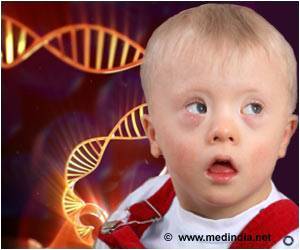Scientists have developed a novel molecule that can travel into cells, deliver genetic cargo, and pack a beacon so that scientists can follow its movements in living systems.
A novel molecule that can travel into cells, deliver genetic cargo, and pack a beacon so that scientists can follow its movements in living systems has been developed by scientists.
This advancement is a result of the efforts of Theresa M. Reineke, associate professor of chemistry in the College of Science, and her colleagues in her lab at Virginia Tech and at the University of Cincinnati."My lab has been trying to find a way to deliver genetic-based drugs into cells," said Reineke.
While studies being conducted across the world are using information from the human genome project as an approach to treat disease, Reineke's focus is cancer and cardiovascular disease.
"Traditional drugs are aimed at treating disease at the protein level. Genetic drugs - such as those that can alter or control gene expression - aim to treat disease at the genetic level and have the added benefit of being more specific for their medicinal target," she said.
The scientists created novel polycations, a polymer chain with positive charges, which is not too unusual.
DNA itself is a polyanion, a polymer with negative charges. However, the Reineke Group's supramolecule contains chemistry (oligoethyleneamines) that binds and compacts nucleic acids - pieces of the DNA - into nanoparticles.
"In our experiments, these delivery beacons provide the ability to track DNA delivery into living cells. They provide the potential for tracking genetic therapies within the living body," said Reineke.
At the tissue scale, magnetic resonance imaging (MRI) is used to see where the nanoparticles are going.
"This ability to track the movement and delivery of a gene-based drug provides an opportunity to understand the mechanism of delivery and monitor efficacy in real time, so that we can develop better materials for delivering genetic therapeutics and ultimately better treatments," Reineke said.
Source-ANI
RAS
 MEDINDIA
MEDINDIA




 Email
Email






